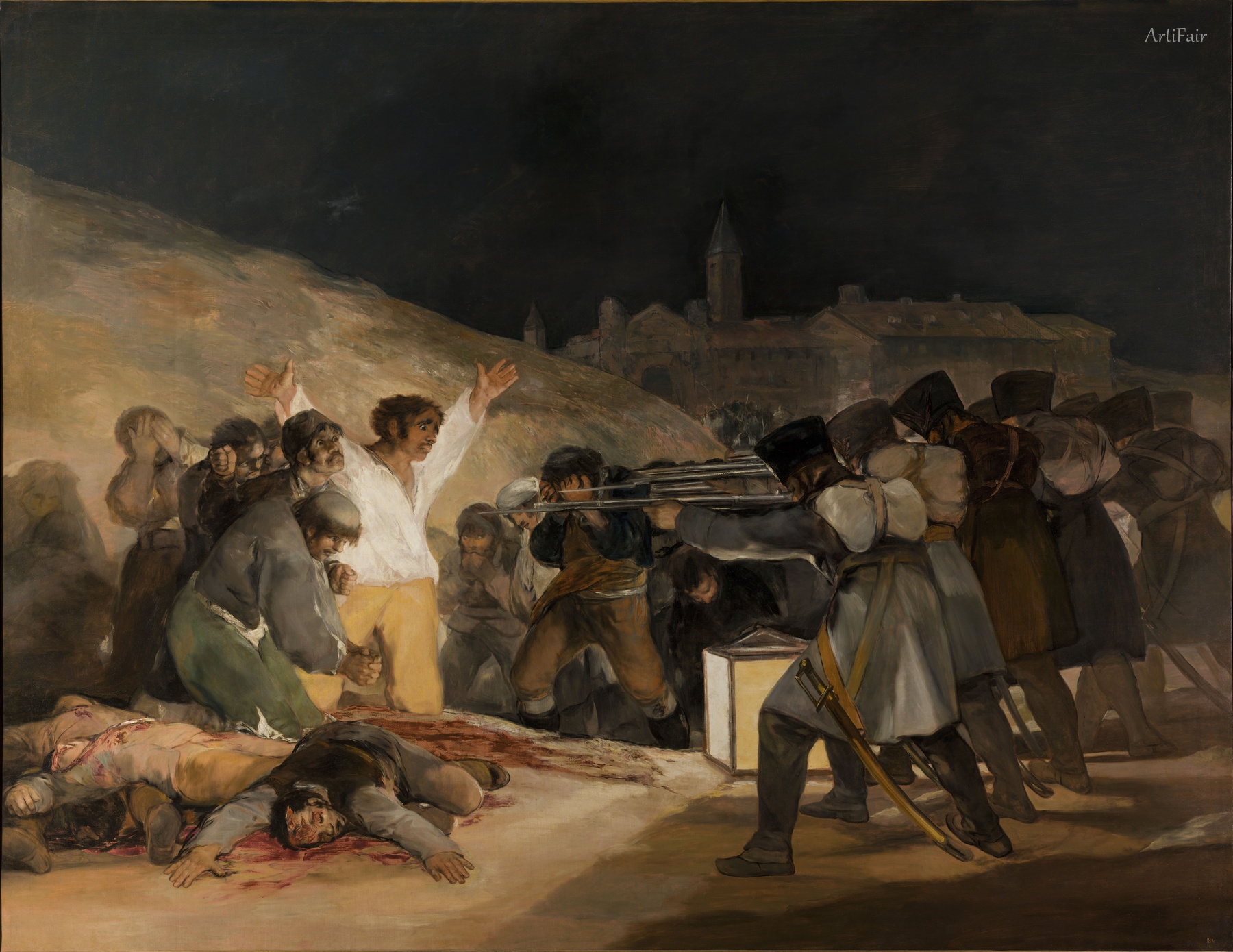
Art Appreciation
This powerful and haunting scene unfolds beneath a dark, ominous sky, capturing a moment of raw human fear and brutality. On one side, a group of unarmed civilians, identifiable as Spanish guerrilla fighters, stand amid the terrors of wartime. They are bathed in a harsh, dramatic light that highlights their anguish and desperation. Central to the composition is a figure in a white shirt with arms raised, embodying both surrender and an almost Christ-like innocence amidst the violence. The contrast of light and shadow is striking; the victims’ faces and bodies emerge from a ground lit by a stark, yellowish glow, while the faceless execution squad in dark uniforms fires relentlessly. The anonymity of the soldiers, depicted with shadowed faces, conveys an impersonal, mechanized cruelty.
Goya’s masterful use of chiaroscuro intensifies the emotional charge, while the calculated arrangement of figures creates a balanced yet chaotic tension. The foreground strewn with lifeless bodies grounds the scene in horror, making palpable the massacre’s devastating cost. The dark background and looming structures silently suggest the ominous presence of authoritarian power. This painting’s historical weight is tied directly to its depiction of Napoleon’s troops executing Spanish resistors in 1808 — a harrowing testament of the cruelty inherent in war and the resilience of human spirit. Its artistic significance lies not just in its dramatic realism but in its pioneering role in political and social commentary art, evoking empathy and outrage across generations.